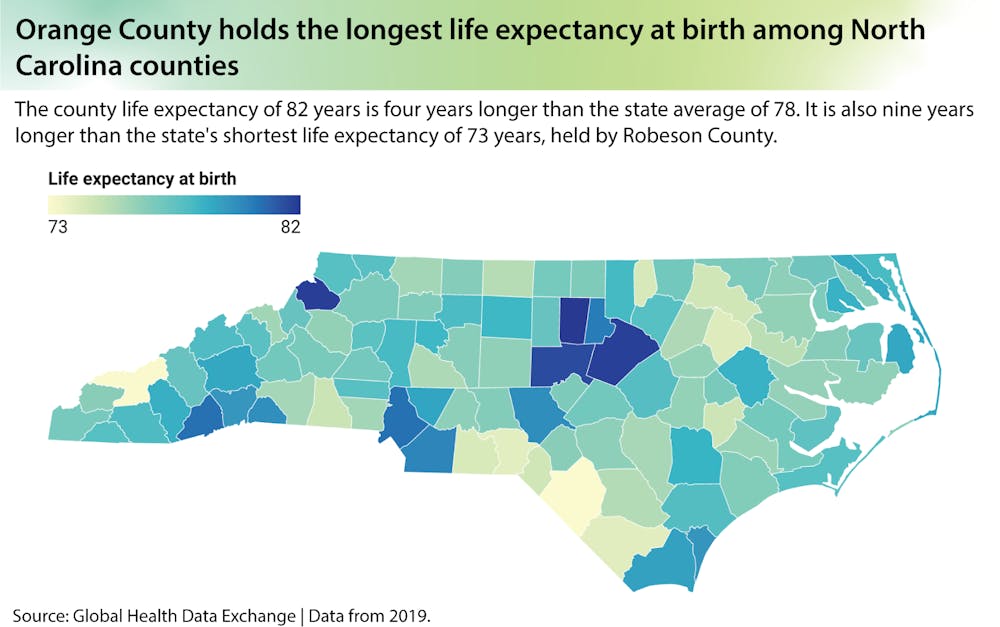Orange County residents lead the state's average life expectancy by almost four years.
According to the Institute for Health Metrics and Evaluation’s 2019 U.S. health map, the average life expectancy for a North Carolina resident is 78.2 years, while the average in Orange County is 82.1. The listed U.S. life expectancy for 2019 was just over 79 years.
Robeson County ranks the lowest in the state with a life expectancy of 73 years, which is about nine years behind Orange County. Rural areas like Robeson County have a notably lower life expectancy than the rest of the state.
Jennifer Lund, an associate professor of epidemiology at the UNC Gillings School of Global Public Health, said structural racism, which has been prominent in the South, provides socioeconomic context for the differences in life expectancy.

According to the Institute for Health Metrics and Evaluation’s 2019 U.S. health map, the average life expectancy for a North Carolina resident is 78.2 years, while the average in Orange County is 82.1. Social determinants, such as healthcare access and housing, contribute to the higher life expectancy in Orange County.
Geographic and socioeconomic disparities in access to healthcare, as well as possible delays in accessing treatment, can lead to individuals being diagnosed with cancer at a later or untreatable stage, Lund said.
Her research areas focuses on geriatric oncology and pharmacoepidemiology, which is the study of the interactions between medicines and human populations in real life conditions. Lund said she has increased her research on aging because of the high median age of those who are diagnosed with cancer across the state.
“North Carolina just recently expanded Medicaid, about 10 years after other states,” Lund said. “So, that in itself is kind of a huge barrier to healthcare access for some people.”
Orange County, though, is home to the UNC Health Care system and has resources, such as free transit, that make hospitals more accessible.



